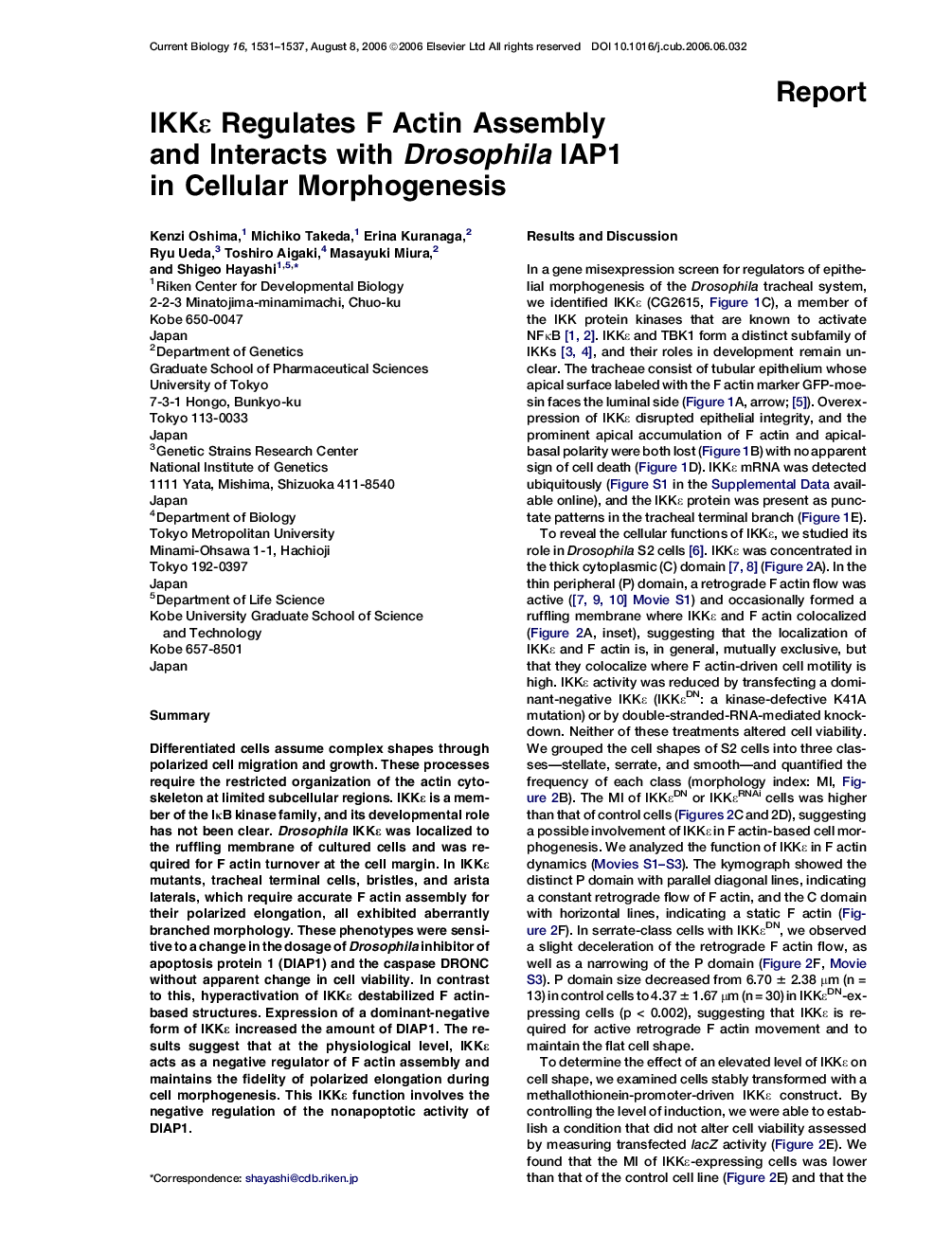| Article ID | Journal | Published Year | Pages | File Type |
|---|---|---|---|---|
| 2045542 | Current Biology | 2006 | 7 Pages |
SummaryDifferentiated cells assume complex shapes through polarized cell migration and growth. These processes require the restricted organization of the actin cytoskeleton at limited subcellular regions. IKKɛ is a member of the IκB kinase family, and its developmental role has not been clear. Drosophila IKKɛ was localized to the ruffling membrane of cultured cells and was required for F actin turnover at the cell margin. In IKKɛ mutants, tracheal terminal cells, bristles, and arista laterals, which require accurate F actin assembly for their polarized elongation, all exhibited aberrantly branched morphology. These phenotypes were sensitive to a change in the dosage of Drosophila inhibitor of apoptosis protein 1 (DIAP1) and the caspase DRONC without apparent change in cell viability. In contrast to this, hyperactivation of IKKɛ destabilized F actin-based structures. Expression of a dominant-negative form of IKKɛ increased the amount of DIAP1. The results suggest that at the physiological level, IKKɛ acts as a negative regulator of F actin assembly and maintains the fidelity of polarized elongation during cell morphogenesis. This IKKɛ function involves the negative regulation of the nonapoptotic activity of DIAP1.
